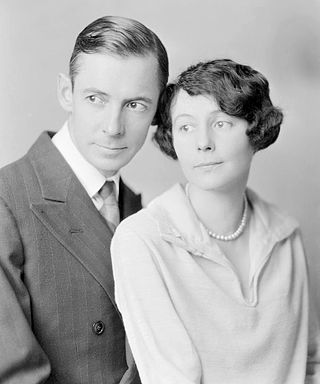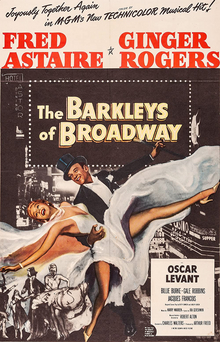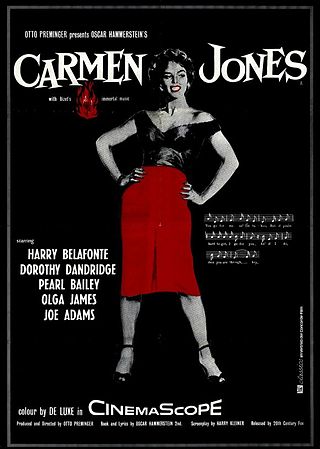
George Gershwin was an American composer and pianist whose compositions spanned popular, jazz and classical genres. Among his best-known works are the orchestral compositions Rhapsody in Blue (1924) and An American in Paris (1928), the songs "Swanee" (1919) and "Fascinating Rhythm" (1924), the jazz standards "Embraceable You" (1928) and "I Got Rhythm" (1930), and the opera Porgy and Bess (1935), which included the hit "Summertime".

Otto Ludwig Preminger was an Austrian-American theatre and film director, film producer, and actor. He directed more than 35 feature films in a five-decade career after leaving the theatre. He first gained attention for film noir mysteries such as Laura (1944) and Fallen Angel (1945), while in the 1950s and 1960s, he directed high-profile adaptations of popular novels and stage works. Several of these later films pushed the boundaries of censorship by dealing with themes which were then taboo in Hollywood, such as drug addiction, rape and homosexuality. He was twice nominated for the Academy Award for Best Director. He also had several acting roles.

Dorothy Jean Dandridge was an American actress and singer. She was the first African-American film star to be nominated for the Academy Award for Best Actress for Carmen Jones (1954). Dandridge had also performed as a vocalist in venues such as the Cotton Club and the Apollo Theater. During her early career, she performed as a part of the Wonder Children, later the Dandridge Sisters, and appeared in a succession of films, usually in uncredited roles.

Porgy and Bess is an English-language opera by American composer George Gershwin, with a libretto written by author DuBose Heyward and lyricist Ira Gershwin. It was adapted from Dorothy Heyward and DuBose Heyward's play Porgy, itself an adaptation of DuBose Heyward's 1925 novel Porgy.

Diahann Carroll was an American actress, singer, model, and activist. Carroll was the recipient of numerous nominations and awards for her stage and screen performances, including a Tony Award in 1962, Golden Globe Award in 1968, and five Emmy Award nominations.

Samuel Goldwyn, also known as Samuel Goldfish, was a Polish-born American film producer and pioneer in the American film industry, who produced Hollywood's first major motion picture. He was best known for being the founding contributor and executive of several motion picture studios in Hollywood. He was awarded the 1973 Golden Globe Cecil B. DeMille Award, the Irving G. Thalberg Memorial Award (1947) and the Jean Hersholt Humanitarian Award (1958).

Robert Russell Bennett was an American composer and arranger, best known for his orchestration of many well-known Broadway and Hollywood musicals by other composers such as Irving Berlin, George Gershwin, Jerome Kern, Cole Porter, and Richard Rodgers.

Anne Brown was an American lyric soprano for whom George Gershwin rewrote the part of "Bess" into a leading role in the original production of his opera Porgy and Bess in 1935.

Rouben Zachary Mamoulian was an Armenian-American film and theater director.

Blue Monday was the original name of a one-act "jazz opera" by George Gershwin, renamed 135th Street during a later production. The English libretto was written by Buddy DeSylva. Though a short piece, with a running time of between twenty and thirty minutes, Blue Monday is often considered the blueprint to many of Gershwin's later works, and is often considered to be the "first piece of symphonic jazz" in that it was the first significant attempt to fuse forms of classical music such as opera with American popular music, with the opera largely influenced by Jazz and the African-American culture of Harlem.

This 1951 recording of George Gershwin's opera Porgy and Bess was the first "complete" recording of the work from beginning to end, not a series of selections of popular songs from the work.

Dorothy Heyward was an American playwright.
Porgy and Bess, the opera by George Gershwin, has been recorded by a variety of artists since it was completed in 1935, including renditions by jazz instrumentalists and vocalists, in addition to operatic treatments.

The Barkleys of Broadway is a 1949 American Technicolor musical comedy film from the Arthur Freed unit at Metro-Goldwyn-Mayer that reunited Fred Astaire and Ginger Rogers after ten years apart. Directed by Charles Walters, the screenplay is by Betty Comden, Adolph Green, and Sidney Sheldon, the songs are by Harry Warren (music) and Ira Gershwin (lyrics) with the addition of "They Can't Take That Away from Me" by George and Ira Gershwin, and the choreography was created by Robert Alton and Hermes Pan. Also featured in the cast were Oscar Levant, Billie Burke, Jacques François and Gale Robbins. It is the last film that Astaire and Rogers made together, and their only film together in color. Rogers came in as a last-minute replacement for Judy Garland, whose frequent absences due to a dependence on prescription medication cost her the role.
"I Loves You, Porgy" is a duet from the 1935 opera Porgy and Bess with music by George Gershwin and lyrics by Ira Gershwin. It was performed in the opera's premiere in 1935 and on Broadway the same year by Anne Brown and Todd Duncan. They recorded the song on volume 2 of the album Selections from George Gershwin's Folk Opera Porgy and Bess in 1942. The duet occurs in act 2, scene 3, Catfish Row, where Porgy promises Bess that he will protect her. Bess has a lover, Crown, who is abusive and continually seduces her.
The 17th Golden Globe Awards, honoring the best in film for 1959 films, were held on March 10, 1960.

Robert Keith McFerrin Sr. was an American operatic baritone, notable for being the first African-American man to sing at the Metropolitan Opera in New York City. His voice was described by critic Albert Goldberg in the Los Angeles Times as "a baritone of beautiful quality, even in all registers, and with a top that partakes of something of a tenor's ringing brilliance."

Carmen Jones is a 1954 American musical film featuring an African American cast starring Harry Belafonte, Dorothy Dandridge, and Pearl Bailey and produced and directed by Otto Preminger. The screenplay by Harry Kleiner is based on the lyrics and book by Oscar Hammerstein II, from the 1943 stage musical of the same name, set to the music of Georges Bizet's 1875 opera Carmen. The opera was an adaptation of the 1845 Prosper Mérimée novella Carmen by Henri Meilhac and Ludovic Halévy.

Porgy: A Play in Four Acts is a play by Dorothy Heyward and DuBose Heyward, adapted from the short novel by DuBose Heyward. It was first produced by the Theatre Guild and presented October 10, 1927 – August 1928 at the Guild Theatre in New York City. Featuring a cast of African Americans at the insistence of its authors—a decision unusual for its time—the original production starred Frank Wilson, Evelyn Ellis, Jack Carter, and Rose McClendon. Porgy marked the Broadway directing debut of Rouben Mamoulian. The play ran a total of 55 weeks in New York, and the original cast toured the United States twice and performed for 11 consecutive weeks in London.
"I Got Plenty o' Nuttin' " is a bass-baritone aria sung by the character Porgy from George Gershwin's 1935 "folk-opera" Porgy and Bess (1934). The lyrics are by DuBose Heyward, the author of the novel Porgy on which the opera was based, and Ira Gershwin. It is one of the most famous arias from the opera and it has been recorded by hundreds of singers and music groups.
















